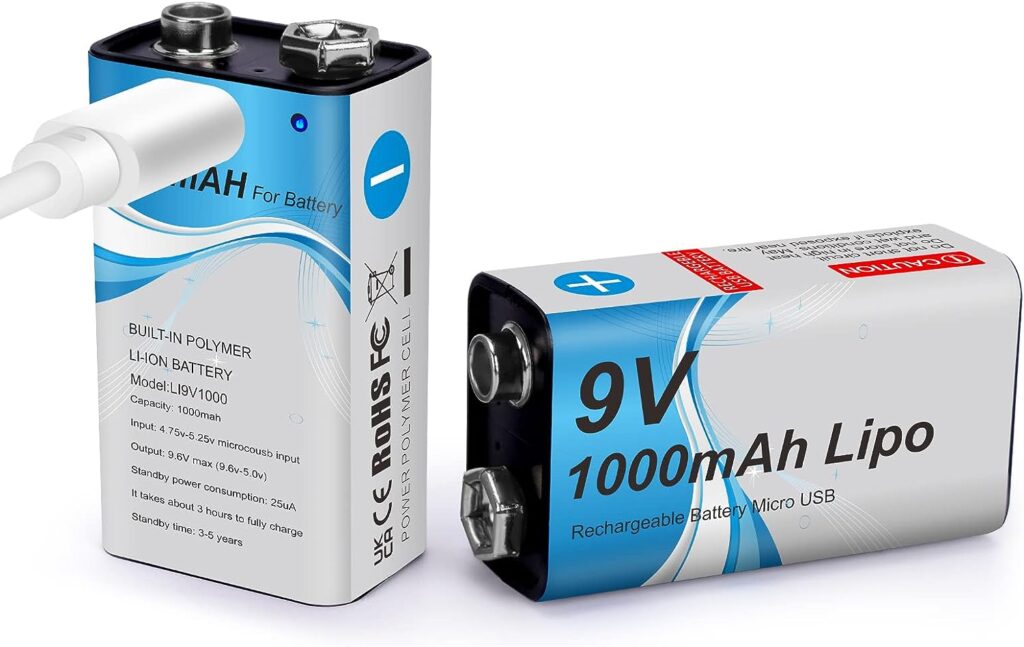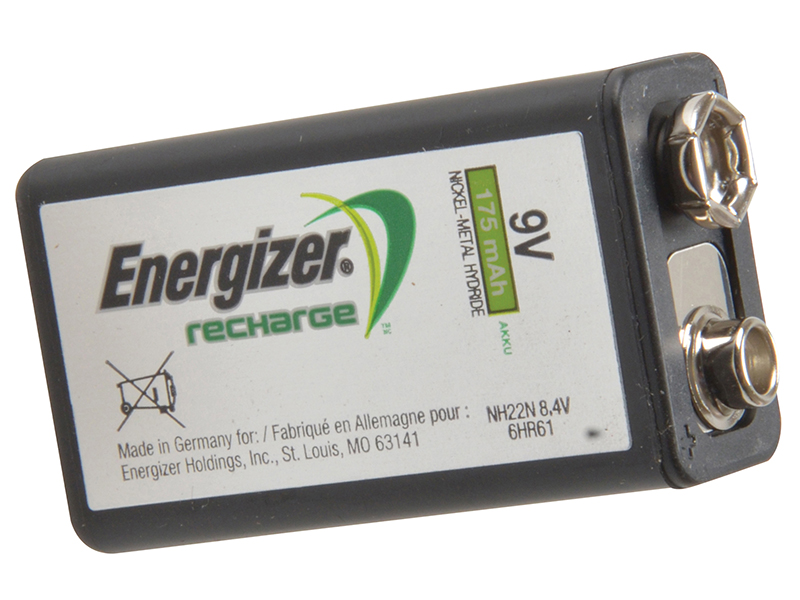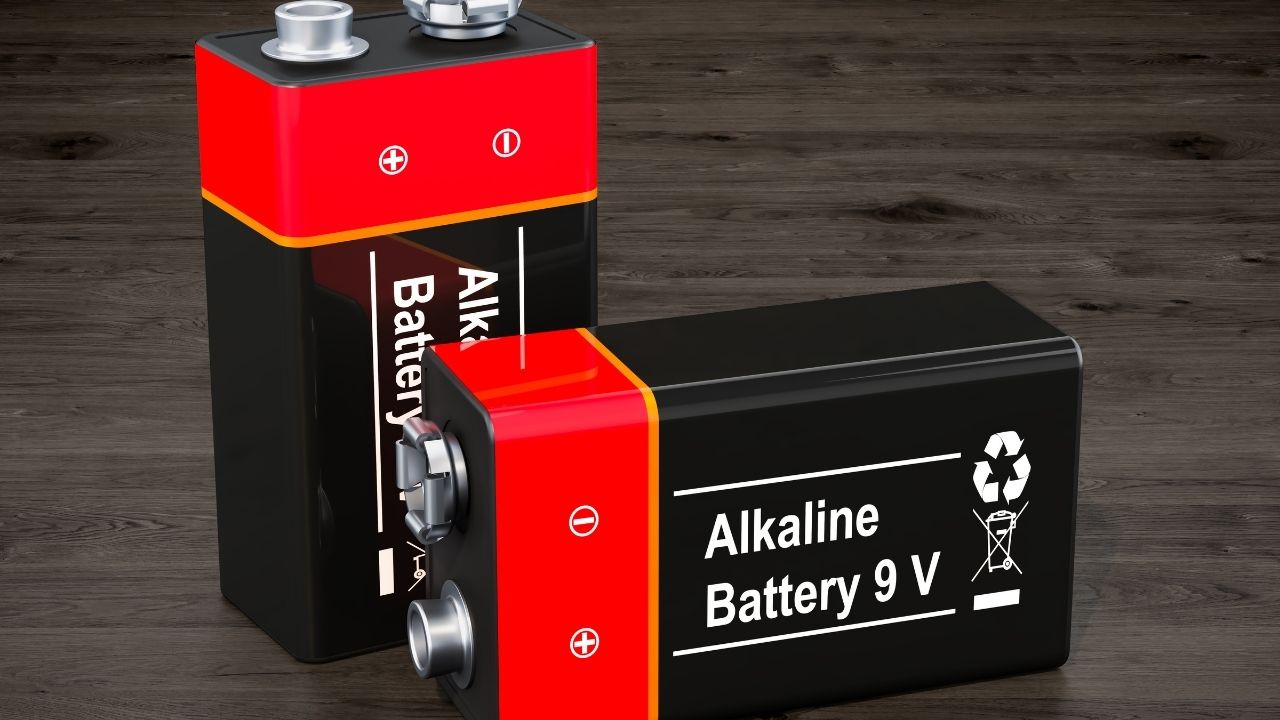How Many Milliamps Are in a 9 Volt Battery? The Power Secrets
“Have you ever wondered about the precise electrical capacity of a 9-volt battery? Understanding how many milliamps are in a 9-volt battery is essential for various applications, from powering household devices to DIY electronics projects.
Different 9-volt batteries have different power capacities. Alkaline ones have about 550 milliampere-hours (mAh) and are good for regular gadgets. Carbon zinc has around 400 mAh and is budget-friendly but not as long-lasting. If you need longer power, lithium 9-volt with 1200 mAh is a great choice. Rechargeable NiMH has 175-300 mAh and can be used multiple times, but they hold less power.
So let’s set off on this adventure together.
What Are 9V Batteries?

The 9V battery stands as a ubiquitous power source, with its origin dating back to its early adoption in transistor radios. Its distinctive rectangular prism shape, capped with a pair of snap connectors at the apex, has made it instantly recognizable. An extensive roster of battery manufacturers, both large and small, produce their interpretations of the 9V battery, offering consumers a diverse array of options.
Furthermore, Primary (non-rechargeable) 9V batteries come in several chemistries, including Alkaline, carbon zinc (Heavy Duty), and Lithium. In contrast, secondary (rechargeable) 9V batteries encompass nickel-cadmium (NiCd), nickel-metal hydride (NiMH), and lithium-ion variants.
In addition, each of these chemistries showcases unique attributes, creating a spectrum of performance and application possibilities. Consequently, certain chemistries prove more suitable for specific tasks than others, offering a dynamic range of power solutions to cater to various needs.
Understanding Amp Ratings in 9V Batteries
The amp rating of 9V batteries varies depending on the type:
- Alkaline 9V batteries typically have an amp rating of around 0.6 Amps.
- Carbon-zinc 9V batteries usually have an amp rating of about 0.4 Amps.
- Lithium 9V batteries can have a higher amp rating of around 1.2 Amps.
The “milliampere-hour” (mAh) rating on a battery indicates its capacity to generate electricity over the course of an hour before it runs out. While this rating reflects the battery’s capacity, the amp rating speaks to its strength, indicating the kind of load it can handle.
Also, manufacturers may not always print the amp rating on the battery, as they often focus on mAh, which they consider more valuable. It’s important to note that the amp rating may vary between different brands.
Measuring Amps on a 9V Battery with Precision: A Multimeter Guide
1) Initiate by adjusting the multimeter’s dial to the DC function.
2) Ensuring a snug connection, secure the cables into the multimeter’s sockets.
3) Establish a connection by attaching the black probe to the battery’s negative terminal and the red probe to the positive terminal. If alligator clips adorn your multimeter, employ them to fasten the probes securely onto the battery’s terminals. If alligator clips are absent, a firm touch with the probes against the terminals will suffice.
Confirm the polarity by observing the labels; a ‘–’ denotes the negative terminal, while a ‘+’ designates the positive terminal. However, it’s worth noting that not all batteries adhere to this convention, some preferring ‘Neg’ and ‘Pos’ labels.
4) Direct your attention to the multimeter’s display. This not only reveals the amp rating but also provides insight into whether the battery aligns with the information imprinted on its surface. A multimeter serves as your guide to discerning the charge status of the battery, making it a valuable asset in your electrical toolkit.
Unveiling the Versatility of 9V Batteries: From Vintage Radios to Modern Gadgets
1. Diverse Applications:
- 9V batteries serve a broad range of purposes, including powering devices like smoke alarms, walkie-talkies, and radios.
- Their adaptability and longevity have ensured their continued use in modern gadgets.
2. Historical Significance:
- Originally employed in transistor radios, 9V batteries have a longstanding history.
- Their distinctive shape, featuring polarized snap connectors, sets them apart.
3. Voltage Variability:
- The label “9 Volt Battery” doesn’t always equate to a consistent 9-volt output.
- Testing with a multimeter reveals a voltage range from 8.4V to 6.5V, especially between alkaline and rechargeable types.
4. Brand Influence:
- The choice of brand significantly impacts battery performance and reliability.
- High-quality batteries can endure up to five years, while lower-quality alternatives may last only days or hours.
5. Chemistry Matters:
- Battery chemistry plays a crucial role in performance and price.
- Carbon zinc batteries are budget-friendly but generally offer lower performance compared to more expensive lithium options.
6. Quality vs. Cost:
- Quality often aligns with cost, and premium ones not only meet their advertised voltage but also tend to have a longer lifespan.
- Investing in quality batteries can result in more extended usage and reliability.
Determining the Depletion of a 9V Battery: Voltage and Equipment Compatibility
The notion of a 9V battery being ‘dead’ at precisely 0 volts is not entirely accurate. In practice, a 9V battery is typically considered depleted when its voltage falls below the 8-volt mark. However, the ultimate verdict on a battery’s vitality depends on the specific device it powers.
The crux of the matter lies in the device’s voltage rating. A 9V battery is deemed ‘dead’ when it can no longer sustain the operation of the connected equipment. Therefore, if a battery’s voltage drops below 8 volts and it no longer supplies the necessary power for the device, it’s time for a replacement. It’s worth noting that some devices can function with voltages as low as 4V.
Interestingly, even a nearly empty alkaline battery can maintain a reasonably stable voltage. This resilience arises from the chemical reactions within the battery, which persist even when the battery approaches its discharge limit.
Hence, the practical indicator of a ‘dead’ 9V battery isn’t solely its voltage level; it’s the device’s performance that truly determines its viability. Even though 7 volts may seem substantial in the context of a 9V battery, if it fails to operate the device, it’s technically ‘dead’.
How to Dispose of 9V Batteries?

Check for Collection Points: Many communities have designated collection points or recycling centers where you can drop off used batteries. Check with your local recycling program or waste facility to see if they accept 9V batteries.
Use a Battery Recycling Program: There are various battery recycling programs and companies that accept and recycle batteries. These programs often have drop-off locations at retail stores or offer mail-in options.
Tape Terminals: To prevent accidental short-circuiting, it’s a good practice to tape the battery terminals with electrical tape before disposal. This helps ensure the batteries don’t come into contact with other batteries or metal objects, which can be a safety hazard.
Keep Batteries Separate: Store used 9V batteries separately from other household waste until you can properly dispose of them. This prevents potential leaks or contamination.
Avoid Incineration: Do not incinerate them as this can release harmful chemicals into the environment.
Follow Local Regulations: Be aware of local regulations regarding it . Some areas may have specific guidelines for the disposal of batteries.
FAQs
Q1: What Is The Equivalent To A 9 Volt Battery?
A 9V battery has 9 volts. You can replicate this capacity by combining multiple batteries with matching voltage. For example, you can use 6 AA batteries (1.5V each) to create a 9V equivalent, but you’ll need a mechanism to connect them to your device.
Q2: How Many Watts In A 9 Volt Battery?
The wattage of a 9V battery depends on the amperage (A). For example, with a 0.5A load, it’s 4.5 watts (9V x 0.5A), and with a 1A load, it’s 9 watts (9V x 1A). However, the exact wattage depends on the amperage, and 9V batteries don’t label their wattage.
Q3: How Many Hours Does A 9 Volt Battery Last?
The duration a 9V battery lasts varies. Primary alkaline batteries last about 4 hours, while lithium batteries can go for 10 hours or more. Rechargeable NiMH batteries typically last around 4 hours. The actual duration depends on the type of battery and its brand.
Q4: What Battery Is Equivalent To 9V?
The common equivalent to a 9V battery is the PP3 battery. It’s often referred to by various industry names, including 6LR61, 006P, Duracell MN1604, Rayovac A1604, Energizer 522, Varta 4922, MX2400, 1604A, Radio Battery, Smoke Alarm Battery, 9V Block, and Krona.
Q5: What is the mAh rating of a 9V battery?
The mAh rating of a standard 9V battery is typically around 550 mAh for alkaline batteries, but it can vary based on the specific battery brand and type.
Q6: What is the highest capacity 9-volt battery?
The highest-capacity 9-volt batteries can go up to around 1200 mAh for lithium primary batteries. These batteries are designed to last longer and are often used in devices that require extended power.
Q7: What size is a 9V battery?
A standard 9V battery is rectangular in shape, measuring approximately 48.5mm in height, 26.5mm in width, and 17.5mm in thickness.
Q8: How many mA are in a 12 volt battery?
The milliampere rating (mA) of a 12-volt battery can vary widely depending on its type and capacity. Common ratings include 7Ah, 20Ah, 50Ah, and more. The specific rating depends on the battery’s intended use.
Q9: How many mA is a AAA battery?
AAA batteries typically have a milliampere-hour (mAh) rating, not just milliamps (mA). The mAh rating for AAA batteries is often around 1000-1200 mAh, indicating their capacity to deliver current over time. The exact rating can vary based on the specific brand and type of AAA battery.
Final Words
In conclusion, the milliampere rating (mAh) of a 9-volt battery is an important factor to consider when determining its capacity. While standard 9-volt batteries typically have a milliampere-hour rating of approximately 550 mAh for alkaline batteries, there can be variations depending on the specific brand and type.
Additionally, The mAh rating reflects the amount of electrical charge the battery can deliver over time, which directly affects how long it can power various devices. It’s essential to be aware of this rating when selecting the right 9-volt battery for your needs, as it plays a crucial role in ensuring the sustained and reliable operation of your electronic equipment.







